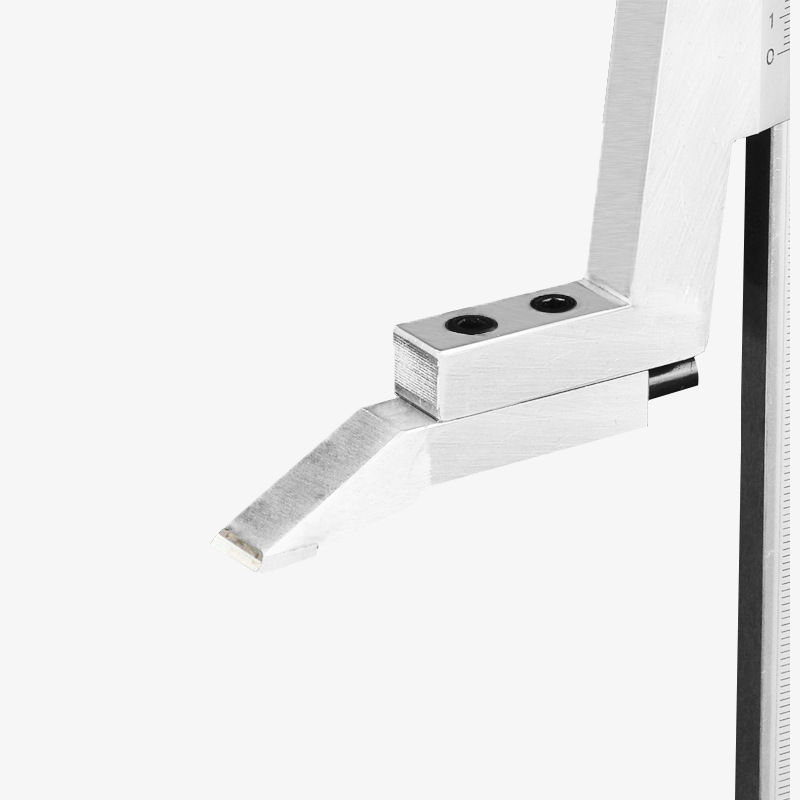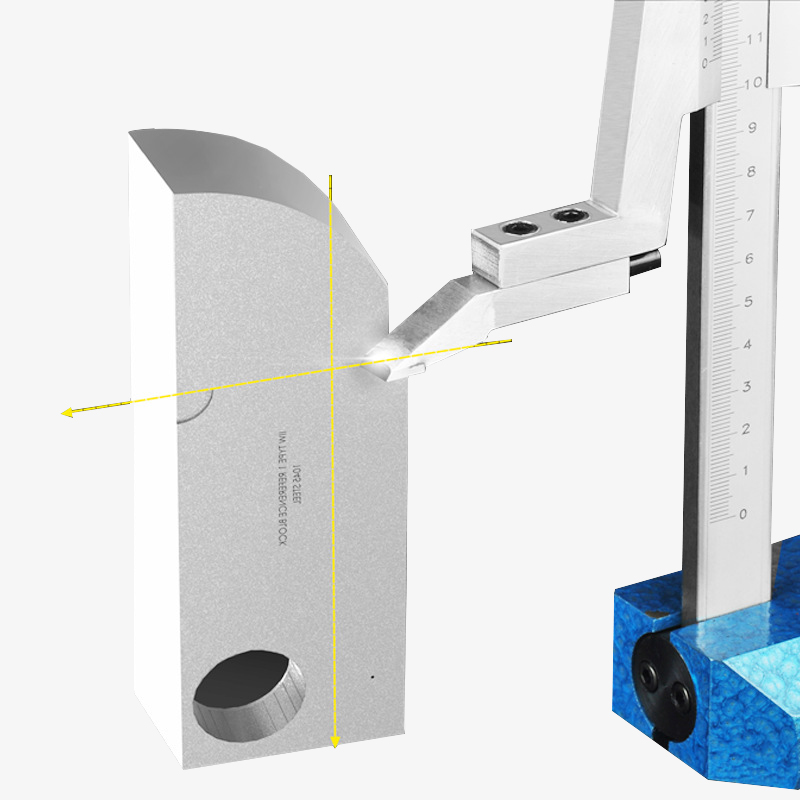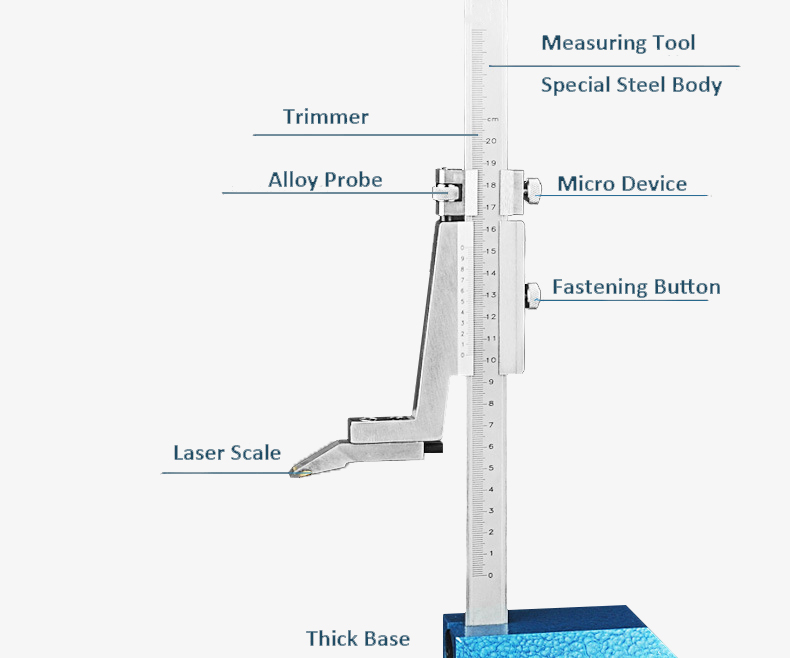Buy a vernier height gauge online. The vertical height gauge with a 0-500mm measuring range. 500mm height gauge has a carbide-tipped scriber for hardness and long life, and which with hand-operated slider with fine-adjustment carriage for precise feed.

Alloy Measuring Jaws
- High-quality alloy tungsten steel inlay
- Measuring height or marking, high hardness, more wear-resistant

High-quality metal base design
- Thick base, stand firmly without shaking
- High measurement accuracy, more straight lines
Detail

Applications
SISCO height gauges are also called height gauges. As the name suggests, its main purpose is to measure the height of workpieces, and it is also often used to measure shape and position tolerances, and sometimes to mark lines. Digital height gauges are mainly used in the automotive industry, manufacturing, science, and research industries.

- Model: SISCO-KQ-500
- Range: 0-500mm
- Error: ±0.05mm
- Resolution: 0.02mm
- Base Material: Metal
- Body Material: Steel
- Weight: 24kg
Q1: What is a vernier height gauge?
A1: The vernier height gauge is used to measure vertical dimension from the reference ground. Vernier Height Gauge consists of a graduated scale or bar held in a vertical position by a finely ground fixed base.
Q2: What is the advantage of the vernier height gauge?
A2: Relatively simple to operate, their main advantage over other height gauges is the range of sizes they come in, meaning they can be used to measure a wide range of workpieces accurately. Typically, two scales are shown on the beam of the height gauge.
Q3: What is the vernier height gauge used for?
A3: Vernier height gauges are used in metrology and metalworking to detect or measure vertical distances. The height gauges are often used to measure a granite surface or scribe part features from a datum plane. To detect the measured feature, a scriber, test indication, touch probe, or CMM-style probe is often utilized.
Tips: Precautions for using a vernier height gauge
- When reading, the line of sight should be facing the engraved line; the force should be uniform, and the force should be about 3-5N to ensure the accuracy of the measurement;
- Pay attention to cleaning the measuring surface of the measuring claw of the vernier height gauge during use.
- The height vernier caliper cannot be used to measure the surface of forgings, castings and moving workpieces. so as not to damage the caliper.
- Thevernier height gauge that has not been used for a long time should be cleaned and oiled and stored in a box.
Thank you for buying industrial test and measurement equipment on SISCO.com, all products sold by SISCO and the partner cover a 12 months warranty, effective from the date of receiving the products.
What is covered?
SISCO is responsible for providing free spare parts, and free technical support to assist the customer to repair the defective products until the problem is solved.
What is not covered?
- Product purchased from anyone other than a SISCO store or a SISCO authorized reseller.
- Expendable parts.
- Routine cleaning or normal cosmetic and mechanical wear.
- Damage from misuse, abuse or neglect.
- Damage from use of parts other than SISCO approved.
- Damage from use outside the product’s usage or storage parameters.
- Damage from use of parts not sold by SISCO.
- Damage from modification or incorporation into other products.
- Damage from repair or replacement of warranted parts by a service provider other than a SISCO authorized service provider.
- Damage caused by the application environment not meeting the product usage requirements and the failure to perform preventive maintenance.

